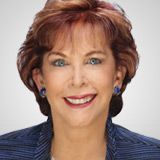The government seems to want you to know how much you're paying in retirement-plan fees, but not to do anything about them, writes MoneyShow's Terry Savage.
Open the envelope, please! If you are one of the more than 72 million employees invested in (or eligible to join) your company's 401(k) plan, you’ll be getting some very valuable information in the mail.
What is it? The newly-required 401(k) fee and expense disclosure form, now being required by the Department of Labor’s Employee Benefits Security Administration (EBSA).
Using this information wisely could make a huge difference in your retirement plan results. The DOL estimates that paying just 1% in additional (and unnecessary) fees each year could reduce your retirement plan balance by 28% over a long career.
For example, someone who has $25,000 in savings and receives an annual return of 7%, paying just 0.5% in fees, would have a retirement account worth $227,000 in 35 years. But pay just an additional 1% in fees, with the same investment return, and your balance at retirement would be only $163,000!
Now that you understand the magnitude of the impact of fees on your 40l(k) plan, you might want to look at the disclosure statement a bit more carefully. Again, it should be arriving in the mail any day now, and certainly before the end of the year.
If you’re one of the nearly 70% of plan participants who told an AARP survey that you didn’t know your plan had any fees, this will be a wakeup call. It will help you decide on mutual-fund investments within your plan, using costs as one input into your decision. And it will show you any additional fees that your plan imposes.
What to Look For
This annual statement will include a chart showing the performance of each of your plan options over four time periods: 1, 5, and ten years, and since the fund’s inception. Most interesting, it will show the fund expenses in two ways: as a percentage of assets, and as a dollar amount per $1,000 invested.
This may be a real eye-opener. If your plan includes an S&P 500 stock index fund, the expenses should be well under 0.5%. But a managed growth fund may have much higher expenses. It’s up to you to decide whether it’s worth the additional costs.
Plus, if you don’t know how well each fund is doing compared to its peers (funds that may not be offered in your plan), you can also compare each fund’s performance over time to its benchmark index. That will give you some perspective.
Also, the chart reveals any extra expenses being charged to the account, such as service charges for low balances or for investment advice being offered within the plan. And you’ll see the impact of accounting, legal, and record-keeping expenses.
Each fund is also required to have a Web site link on the chart, so you can check further into the plan’s objectives, goals, and portfolio turnover, and learn more about the fund managers.
Clearly, having all this information disclosed will help plan participants make smarter choices—if you are willing to take the time to look into these facts. While past performance doesn’t guarantee future results, it is helpful to see how the funds have performed over time, how they compare to their benchmark indexes—and how much you are paying to get this performance!
The Fatal Flaw
But while this latest educational missive from the Labor Department is a welcome and useful tool, there is one thing it does not do. It does not give employees any power or leverage to force the employer to switch to another, lower-cost plan provider—or to include lower-cost funds.
And that’s the huge issue still hovering over the 401(k) industry. Employees have no control over the plan being offered, or the investment choices within the plan. Even worse, they are stuck with the administrative costs of the plan and management costs of the individual fund choices within the plan.
Many small companies offer 401(k) plans that are administered by insurance companies. Typically, their overall fees are higher, and the management fees charged by the funds they include may be way above average compared to those managed by fund companies like Fidelity, Vanguard, and T. Rowe Price.
By the way, what is “average” for plan costs? The Department of Labor said it is requiring disclosure of these costs, but it is not collecting the information from plan providers!
Therefore, there is no “benchmark” for 40l(k) fees and disclosures. The only way you could compare is to check with friends who work at other companies, asking about their level of fees! (Larger public companies typically have the lowest-cost plans.)
If you notice that your retirement plan costs are hefty, what can you do? Heading straight to the HR department to complain is not recommended! With such little job security these days, troublemakers can find themselves out of a job. But you know that already.
That’s where the Labor Department fell down on its job. It isn’t publishing a database or benchmark of what most plans charge. Its Web site should collect and show that information. And it should provide a page where anonymous complaints can be registered against companies that provide plans with above-average fees and charges.
If the DOL kept a database, they could easily check to see if the employee complaint is valid. And they could contact the employer, nicely “suggesting” that fees be reduced, or changes be made in the plan offering.
The DOL’s Employee Benefit Security Administration oversees 512,000 company 401(k) plans. It should stop patting itself on the back for requiring the new disclosures until it can use them to actually pressure employers to set up fairly-priced retirement plans for their workers. And that’s The Savage Truth.





















